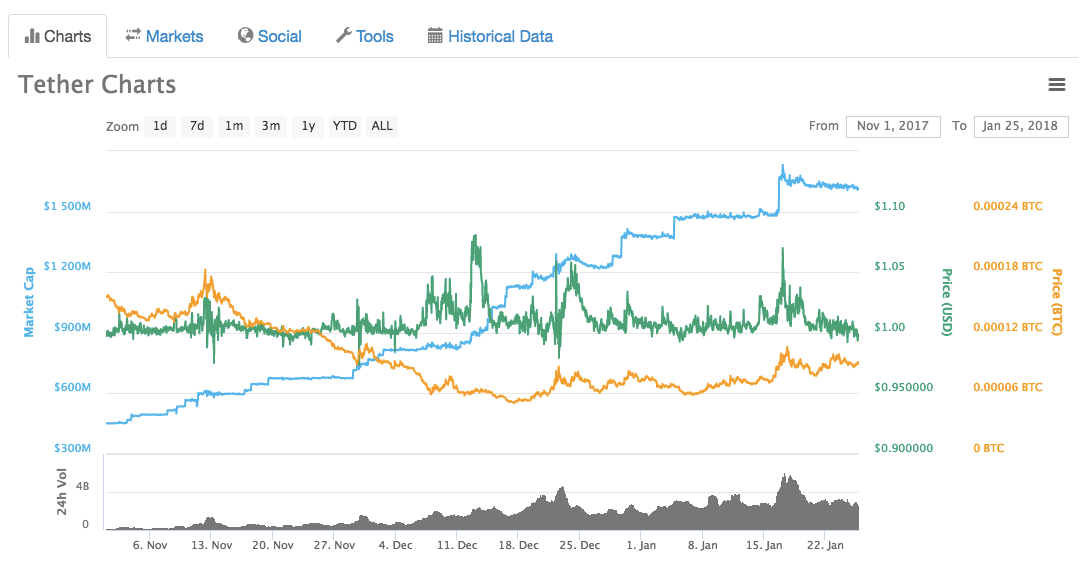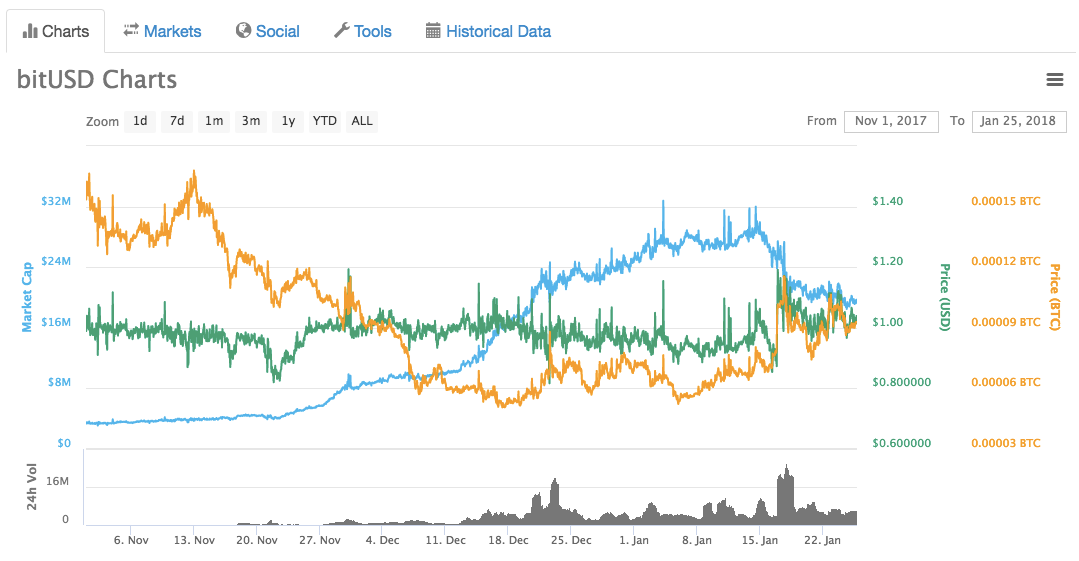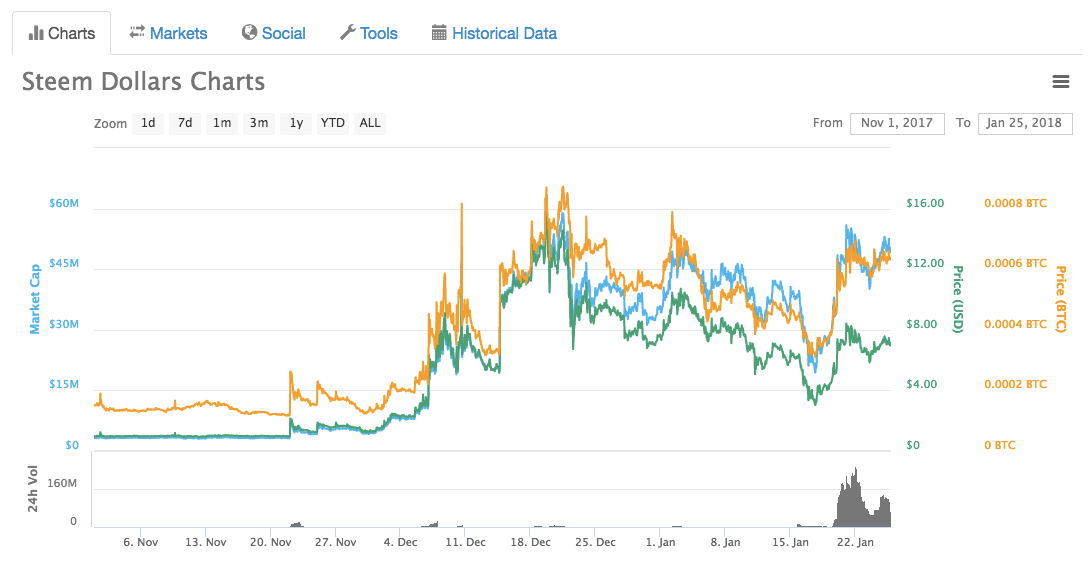This is a complicated topic which I'll say up front most people are not willing to really, truly do appropriate work to care about and understand effectively. If that's you, and you're okay with trusting witnesses you elect to make a good decision on your behalf, don't bother reading further. We've got your back.
If you do want to have an informed, educated understanding of Steem Dollars (SBD) and what value they bring to the STEEM ecosystem, please strap yourself in and read on. This will not be a short conversation. It will not be summarized to make it easy. We'll do our best to work from first principles and read relevant source materials to best inform our understanding. If we take shortcuts here, we may not be fully respecting the impacts of our decisions on a $50M market (SBD) or a $1.6B market (STEEM). I'll also include a video so you can see my body language as we talk about this. It's all good. :)
In any complicated discussion, it's important to start with definitions and first principles as much as possible. So what's a Steem Dollar? Let's go to the white paper starting with page 9:
Steem Dollars (SBD)
Stability is an important feature of successful global economies. Without stability, individuals across the world could not have low cognitive costs while engaging in commerce and savings. Because stability is an important feature of successful economies, Steem Dollars were designed as an attempt to bring stability to the world of cryptocurrency and to the individuals who use the Steem network.
Steem Dollars are created by a mechanism similar to convertible notes, which are often used to fund startups. In the startup world, convertible notes are short-term debt instruments that can be converted to ownership at a rate determined in the future, typically during a future funding round. A blockchain based token can be viewed as ownership in the community whereas a convertible note can be viewed as a debt denominated in any other commodity or currency. The terms of the convertible note allow the holder to convert to the backing token with a minimum notice at the fair market price of the token. Creating token-convertible-dollars enables blockchains to grow their network effect while maximizing the return for token holders.
(see the white paper for more, but let's skip ahead a little)
One example of an issue that may take some time to correct is short-term market manipulation. Market manipulation is difficult and expensive to maintain for long periods of time.
In my reading, the white paper seems to imply speculators buying up SBD above $1 could be considered market manipulation. In the past, when this has happened, it's been relatively short lived and the peg eventually finds itself again.
The current spike in SBD price has lasted much longer.
Steem levels the playing field by requiring all conversion requests to be delayed for three and a half days. This means that neither the traders nor the blockchain has any information advantage regarding the price at the time the conversion is executed.
This is a good thing, because it makes it difficult to manipulate. To those that don't know, SBD is a debt against $1 USD worth of STEEM and there's a conversion function on the blockchain so you can get STEEM for your SBD. The steemit.com interface removed the interface for this conversion feature because with a high market value of SBD, those who convert would lose a lot of value.
A lot of the discussion about SBD right now is if we should implement a conversion in the other direction so we could create SBD using STEEM. The white paper actually covers this:
Minimizing Abuse of Conversions
If people could freely convert in both directions then traders could take advantage of the blockchains conversion rates by trading large volumes without changing the price. Traders who see a massive run up in price would convert to SBD at the high price (when it is most risky) and then convert back after the correction. The Steem protocol protects the community from this kind of abuse by only allowing people to convert from SBD to STEEM and not the other way around.
This concern, to me, is one of the main reasons why SBD is not worth $1 today and that extra value put into STEEM instead. If we had this two-way conversion, fluctuations by speculators in either direction would favor those who opt for stability instead. It's worth noting, the white paper is not sacrosanct. Changes have been made in the past to improve the system (such as removing liquidity rewards).
The main question we should be asking, IMO, is do we think a two-way conversion is a risk? If it's not a risk, and the white paper is wrong, then we can move forward with the idea of making a possible change. If it is a risk, we can stop here, and we're done.
Back to the white paper:
In effect, feed producers are entrusted with the responsibility of setting monetary policy for the purpose of maintaining a stable peg to the USD
This is an important point to reiterate. This is the job of witnesses. Many have argued in the past we, as witnesses, were not doing our jobs when SBD got manipulated up. Some witnesses implemented a feed bias, but personally I didn't like that solution as it tweaked with other economics of the system and had unintended consequences I won't get into here. This issue has been discussed on Github as well in issue 1839. To get fully informed, give that a read and the comments there as well.
Back to the white paper again:
The primary concern of Steem feed producers is to maintain a stable one-to-one conversion between SBD and the U.S. Dollar (USD). Any time SBD is consistently trading above $1.00 USD interest payments must be stopped. In a market where 0% interest on debt still demands a premium, it is safe to say the market is willing to extend more credit than the debt the community is willing to take on. If this happens a SBD will be valued at more than $1.00 and there is little the community can do without charging negative
interest rates.
I haven't heard anyone discuss negative interest rates, and it's certainly not something I'm a fan of, so I'd suggest we can leave that off the table. We can go with this explanation and be done with it. Let the debt continue to increase until the market finds an equilibrium on it's own many weeks, months, or years from now.
That's certainly an option and one holders of (and speculators on) SBD would like to see. It may also mean we miss out on a potential opportunity as a community if we instead build and support a stable token.
To better understand the value potential here, please read this great post which @smooth brought to my attention: An Overview of Stablecoins by Myles Snider
Stablecoins are one of the highest convexity opportunities in crypto. They aim to become global, fiat-free, digital cash, so the total addressable market (TAM) is simply that of all the money in the world: ~$90T. The opportunity for stablecoins is, intrinsically, the largest possible TAM. This vision is larger than that of Bitcoin itself. A fiat-free currency that’s price stable will challenge the legitimacy of weak governments around the world.
Here's another overview I enjoyed:
Dangerous volatility and why we need a stable cryptocurrency by Christopher Georgen
One of the reasons this is being discussed right now, I think, is related to concerns over Tether (USDT) and how it requires trust in a third party to actual hold and secure real USD and not just print new Tether out of nothing. Based on the incredible market cap, the market clearly wants a pegged asset:
Tether:

That's over $1.6 billion! If there was a chance the STEEM ecosystem could capture some of that value via STEEM -> SBD conversions and a stable SBD, should we consider it? How much could that increase the value of STEEM as people buy it up to convert? How much could the entire rewards pool increase if the value of STEEM goes up?
For comparison:
BitUSD:

Steem Dollars:

One may argue that bitUSD has been pretty stable and if USDT runs into trouble, it will enjoy all those new users. That may be true, but if the opportunity is large enough, do we want to give up on trying for some of that for our community as well?
So here's how I'm thinking about this:
Are pegged assets valuable?
For me, based on all we've explored so far, I'd say yes, the market greatly values a stable, pegged asset. If more exchanges were to need better, more trusted stability than USDT and SBD was an option, that could increase the number of exchanges trading both SBD and STEEM because they get one for free when adopting the other. Not only that, when SMTs are launched, if they already support STEEM/SBD, they will be all set for whatever SMT tokens are worth trading (we've seen this already with Ethereum's ERC20 tokens).
Should SBD be a pegged asset?
Well, that's what it was designed to be, so for me that's a clear yes. I may go so far as to say it was designed poorly or that the original design with a low market cap of both SBD and STEEM prevented a risk with two-way conversions that we may not have today because of a higher total market cap.
Should we enforce the SBD peg in both the up and down directions?
To me, if we don't, there's no way to enforce the peg in the upwards direction. It will remain a speculative asset just like STEEM in which case, what value does it bring?
Should we enforce the SBD peg, right now?
This, I think, is the key question. This is the one that has so many people concerned and frustrated. Many really, really enjoy the value of their post rewards right now and directly relate that to a high SBD price. What they may not realize is that high payout might more accurately be related to a rise in STEEM price, not just SBD price.
@smooth pointed out in a conversation recently that STEEM has gone up 46x compared to SBD only going up 7x (with a couple brief spikes to 10-12x) in the same time period. That increased the total rewards by 46x, not just the portion of the rewards paid out in SBD.
One of the things I've seen often in this discussion is claims about SBD growth being the sole driver of user adoption recently. This may be true, but I've yet to see a convincing, fact-based argument for it that isn't just pointing out a correlation (not a causation). It's possible the price of STEEM (and SBD) going up (potentially caused by it being added to a new Korean exchange) is what is really driving new user adoption.
Something that should not be ignored is that the STEEM blockchain doesn't function correctly when SBD are not worth close to $1 worth of STEEM. That's why the internal market is all messed up price-wise. That's why posts don't show accurate potential payout values. It might also be why we've seen a rise in scammers and self-voting as people post more and self-vote more while the SBD is above $1.
Bloggers love the high rewards and don't seem to care about price swings or boom and bust cycles. At least, they don't care as long as the value of STEEM underlying the value of everything else stays high.
Application developers who rely on stable payments for paying for things in the real world with USD do care.
Users in countries with truly broken national currencies who are desperate for any rewards they can get should, IMO, value a stable peg because they can't afford to speculate. If they get paid out with a $7 SBD and it goes down to half that at $3.50, that could be devastating for them. Conversely, if STEEM increased in value and instead they get 7 SBD, each worth $1 each, they can know for certain that value will remain stable. This is a point I'd like for more people to be discussing. A stable currency is critically important for a successful economy and some of our friends in the STEEM ecosystem may really need a stable currency.
The last article I want to reference on this topic comes from one of the first posts I ever read here on Steemit. This post, more than most others, got me so excited about the potential of this platform. Please, give it a read:

The real money isn’t in blogging, content generation, or voting. The real money is found in bootstrapping a digital currency. A currency owned and operated in a decentralized way by ordinary people.
This is the magic of a stable SBD. This is the long-term goal chosen over short-term gains. This is a world-changing idea.
This is what I'd like the STEEM blockchain to support.
Does it need to happen right away while SBDs are still high? Maybe not. Maybe we should let inflation run its course as more and more SBDs are printed. Maybe we apologize to app developers, those who need a stable daily currency, and those who think we're missing a huge potential need for stable coins if USDT falters.
Maybe we can wait.
There's a risk there in both lost opportunity cost (bitUSD and others like it might explode upward in marketshare while we watch) and in creating more debt for future boom and bust cycles which end up wrecking not just speculators, but everyday users who believe their SBD is worth more than it is. Also, if the SBD increases in value even more, implementing a peg later will be that much more difficult.
Conclusion
My current position as a witness:
A working SBD peg is very valuable to the STEEM ecosystem, especially long-term. The peg is currently broken, and we should explore and develop plans to fix it, such as a two-way conversion, as long as we are sufficiently convinced it does not introduce systemic risk. Unless there is a consensus, we should not implement a change right now while the price of SBD is abnormally high. That said, exploring options for keeping it from going higher might be worthwhile (such as a conversion feature which works if SBD reaches > $10, as an example). I'm in favor or developing and testing the code for a two-way conversion, but not implementing it until the price comes down further (maybe < $2?) or the community as a whole demands a change and begins to un vote witnesses who don't move to support the peg.
Those are my thoughts as they are right now. I've participated in many hours of discussions which continually impress me with how much the witnesses and the community care about this place and want to see it thrive.
Here are some of the posts I've read on this topic. Please link me to any other valuable contributions in the comments below.
- Witness Discussion – SBD price and reverse peg - @reggaemuffin
- Still in Defense of a High SBD: Why Witnesses Should not Implement Steem to SBD Conversions Now- - @aggroed
- Can I have a list of top 20 witnesses that want to bring SBD price down right now? - @steemitadventure
- Vlog 198: Enforce the SBD peg or not? - @exyle
- Unpegged SBD: A Pointless Speculative Asset - @greer184
- High SBD or $1 SBD? — Putting Greed Aside, High SBD Is Still Best - @ginquitti
- SBD - how do you explain what is going on? - @famunger
- Is SBD propped up by design? - @knircky
- STEEM DOLLAR Peg Debate : Stakeholder Analysis - @buggedout
- How do we fix the peg without popping the SBD bubble? I may have an idea. - @bmj
- STEEM DOLLAR Will Fall To $1 USD : Here’s Why - @buggedout
If you've actually read all that, you've done more work than I have. What do you think?

Luke Stokes is a father, husband, business owner, programmer, STEEM witness, and voluntaryist who wants to help create a world we all want to live in. Visit UnderstandingBlockchainFreedom.com









